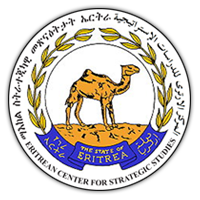January 31, 2014
The Tenacity and Resilience of Eritrea (1979–1983)

The Tenacity and Resilience of Eritrea (1979 – 1983) by Tekeste Fekadu
by Tekeste Fekadu | “The Tenacity and Resilience of Eritrea, picks up where The Journey from Nakfa to Nakfa left off. This book is about the struggle for survival of the Eritrean Liberation Fronts on the one hand and the Ethiopian Regime on the other at the gates of Nakfa in particular and Sahel in general following the historic strategic Withdrawals to the mountains of Sahel made by the Eritrean Liberation Fronts in order to save the Revolution.
At the heart of Tenacity and Resilience is a war for survival: the Derg in order to survive had to win the war, and the Eritrean Liberation Fronts had to defend and subsequently liberate Eritrea. Therefore, the battles fought in the mountains of Sahel were battles for the final solution or the survival of the fittest.
The Eritrean Liberation Fronts fought for survival and saved the Eritrean Revolution from extinction despite the continuous and endless efforts of the Ethiopian Regime and its allies. Thus, the revolution survived and tipped the balance at the end of this particular period (1983). However, how did the EPLF (Eritrean People’s Liberation Front) survive? How did it tip the balance after strategic Withdrawals?
I wrote this book by bringing together my notes and memories. Except for what I witnessed myself, some details may only be opinions and assumptions of the rank and file or that of the middle cadre and the time the events described took place. Other passages may not correspond exactly to what happened. There is also the inevitable holding of military and political secrets related to weapons, ammunition and causalities. To try to check every detail with the EPLF documents and/or with those who witnessed this or that event would be impractical and too cumbersome.
Besides I expect this book to be a narration of the events as ordinary EPLF combatants saw, perceived, felt and understood them rather than as an official history that can be checked and counter checked for all legal and historical considerations. However, I would be more than happy to receive comments from readers.”



